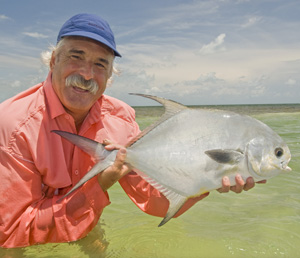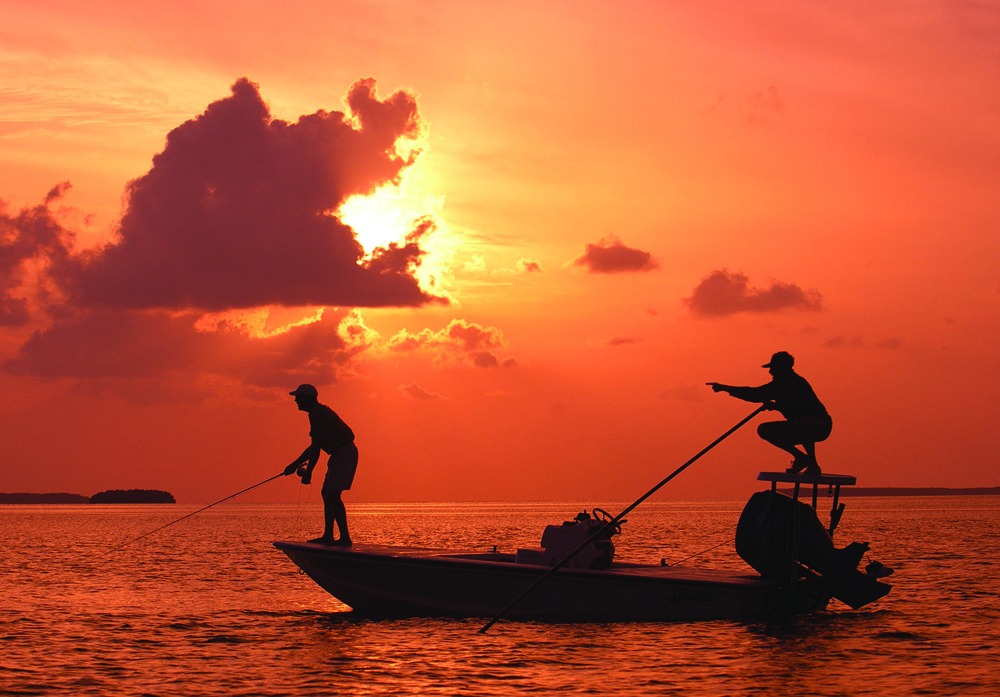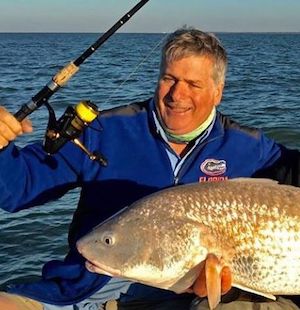Want to hunt the skittish gray ghost of the flats, the bonefish? Come to the Keys. Feel like battling a reel-emptying blue marlin? Come to the Keys. Want to sit in a beach chair, sipping a cold cocktail while watching your bobber dance in the current? Come to the Keys.

Acclaimed as among the top saltwater sportfishing destinations on the planet, the Keys offer sensational angling opportunities throughout the year.
The subtropical weather, nearby Gulf Stream and 120-mile-long arc of islands that make up the Florida Keys create one of the world’s best fishing environments.
Off the Keys’ “outer” curve lies the Atlantic Ocean. Warm and shallow near shore, the ocean reaches depths of more than 600 feet just 11 miles offshore in the Upper Keys. Near Key West, 600-foot depths are just over five miles from shore. Travel another 12 to 15 miles south, and depths begin to approach 2,000 feet.
Keys deep-sea fishing — ideally with a first-class local charter captain — means targeting some of the world’s greatest sportfish: sailfish, swordfish and marlin.
In addition, rocket-like wahoo and kingfish deliver high-speed thrills. And for a wonderful food fish, consider the island chain’s most popular summer visitor, the dolphin fish (not to be confused with Flipper).
What are the best times to catch these prizes?
Blue marlin fishing is generally best from April through July. Sailfish season runs from November through February. Most wahoo race through Keys waters during April and May, and also November through December. Kingfish are most active September to March. Dolphin fishing starts around April and continues through September.
Actually, though, those seasons often overlap — because in the Keys, most species can be caught year-round.
Closer to the reef lines, you can catch grouper and snapper with lighter gear. If you try grouper fishing, you’ll probably discover why locals say, “Whoever wins the first three seconds wins the battle.” That’s because moving a grouper out from under a rock takes arms of steel and tackle to match.
Yellowtail snapper (arguably the Keys’ tastiest food fish) are year-round residents, although the hottest fishing tends to be from April through June. Grouper are also year-round residents, but they’re best fished from November through March.
Florida Bay, edged by the “inner” curve of the Keys and the Florida mainland, is popularly called the backcountry. It’s home to five sought-after gamefish: bonefish, tarpon, permit, redfish and snook.
The largest bonefish in the world, around 8 to 14 pounds, can be caught near Islamorada. Tarpon from 60 to 150 pounds are found along the entire length of the Keys. And permit, for years found only in the Lower Keys and far north Key Largo, have begun showing up on flats everywhere in between.

Doug Easter shows off a nice permit before releasing it alive, while fishing off Sugarloaf Key in the lower Florida Keys. (Photo by Steve Bly, Florida Keys News Bureau)
The Keys’ redfish and snook usually require some coaxing out from their mangrove hideaways — but once hooked, these backcountry brutes will test even the most experienced angler.
Backcountry species are year-round residents. Temperature-sensitive bonefish can be caught all year long, but the prime months are September through November. Tarpon come close to Keys bridges from April through July. Permit are on the flats in the greatest numbers from April through September, while redfish and snook fishing is best from December through July.
The shallow unmarked waters of Florida Bay can be confusing, so it’s smart to hire an experienced backcountry guide.
FYI, you must abide by Florida fishing regulations, which define bag limits and closed seasons, and you’ll need a saltwater fishing license — available at many bait and tackle shops or here.
And trust me … whatever species you’re seeking, once you’ve tried fishing Keys waters, you’ll be hooked!


